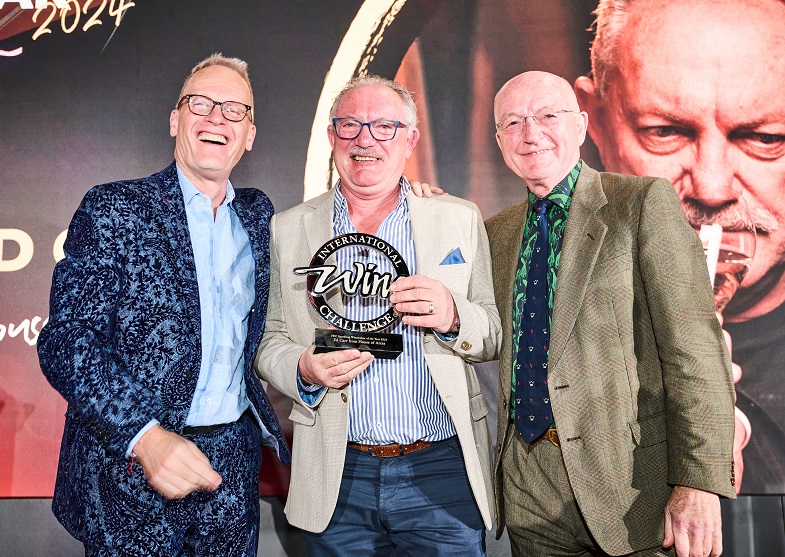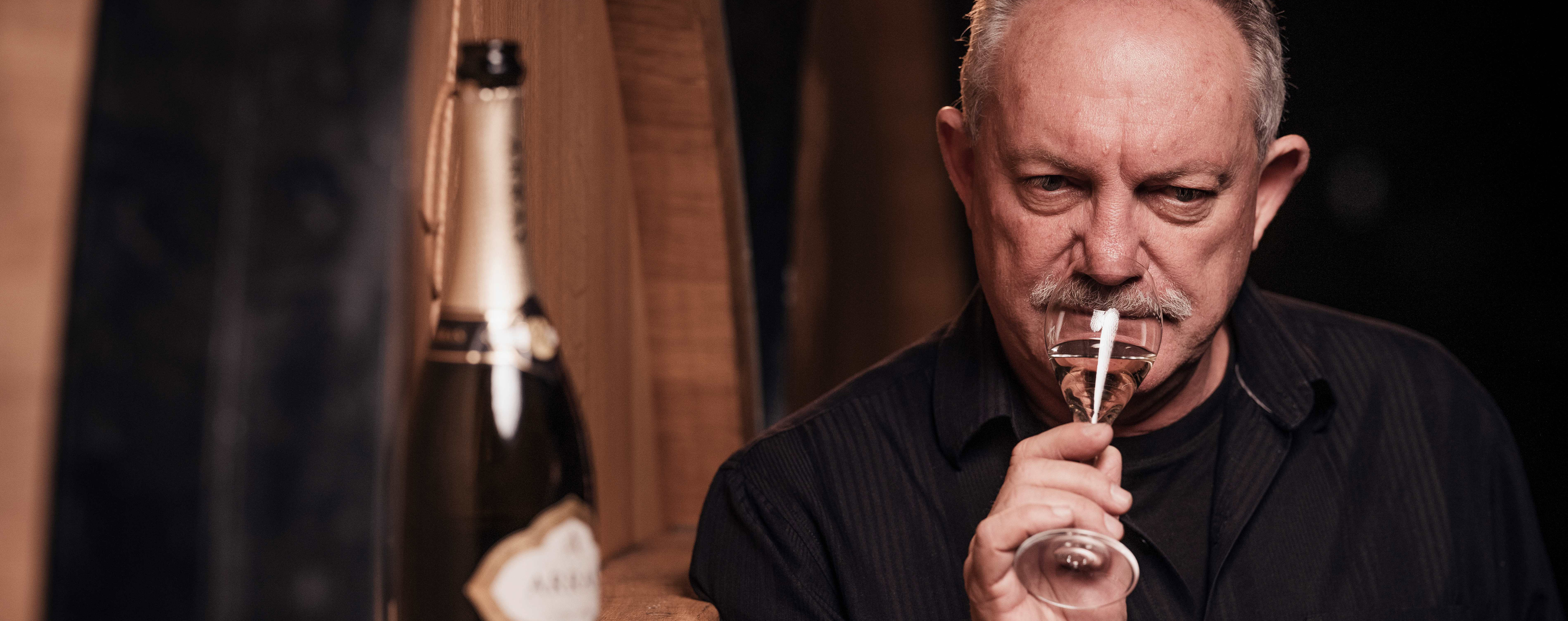Last night, in London, head winemaker Ed Carr was named IWC Sparkling Winemaker of the Year. It’s only the second time in the competition’s 40-year history that the accolade has gone to a producer outside Champagne (Nyetimber’s Cherie Spriggs lifting English sparkling wine with her success in 2018).
House of Arras’s sparkling wines picked up 12 medals in this year’s competition, as well as the Australian Sparkling Trophy for its Blanc de Blancs 2014 – described by judges as “a great example of a sparkler tasting like a really serious wine in its own right with bubbles as an extra”.

The award also highlights Tasmania’s great potential as the Southern Hemisphere’s premium sparkling wine region.
Ed came to the island with a vision for crafting world-class sparkling wines in its ancient soils and cool climate, starting at the formation of the House of Arras in 1995. ‘Arras’, by the way, means ‘rich tapestry’. It is now owned by Handpicked Wines.
Australian wine critic James Halliday, recipient of this year’s Lifetime Achievement Award, described Ed as “a quietly spoken genius” and “by some considerable distance, Australia’s greatest sparkling winemaker”.
Ed on winemaking
Canopy: What’s your winemaking philosophy?Ed Carr: “To craft world-class sparkling wines that express the terroir of Tasmania and the winemaking style of the House of Arras.
“The wines must be mature and complex and yet retain an elegant structure and vibrancy of fruit.”
Tell us about the work in the vineyard.
EC: “Viticultural practices are varied to suit the specific vineyard site, but the overall goal remains the same: to produce pristine fruit with a balance of sugar, physiological ripeness and acidity.
“Due to the generally dry conditions of the Tasmanian autumn, some supplementary irrigation is required to ensure vine activity throughout the growing season.
“Tasmania is also known for its intense sunlight due to the clarity of the air (low humidity and free from particles/pollutants) and the vines require some canopy management to ensure balanced light infiltration.”
Tell us about the terroir.
EC: “The wines are made from grapes grown in premium cool-climate viticultural sites in Tasmania.
“Although the island is designated as one region by Wine Australia, there are many subregions that have been established throughout the island and each of these produces wines that reflect their individual terroir due to their unique microclimates and/or soils.
“Over the past 30 years the winemaking team has built an extensive picture of the qualities of each variety grown in these subregions and how each fit in the blend matrix across the individual labels.
“We are not averse to releasing single-vineyard/subregional wines but when it comes to quality, if blending produces a more complete and consistent wine then that is the path we will take.
“For the future, we will increase production in each vineyard resource to suit the expected growth of the respective labels.
“In addition to building on the proven subregions, we will continue to experiment in different areas to test if there are opportunities to further evolve our wine style and also build some insurance against climate change by planting in the cooler and more marginal sites.”
What are the subregions?
EC: “Fruit is sourced from six pristine regions of Tasmania with varying terroir from inland, to coastal, and warm/dry to cool/wet. Each block within the vineyard is managed specifically to create a specific style.
“The rich tapestry of vineyard selection provides options and diversity with blending between regions and vineyards.”
The main regions are: Tamar Valley, Pipers River & Northeast, Coal River Valley, East Coast, Huon Valley, Derwent Valley, and Devonport & Northwest.
What are your key grape varieties?
EC: “The blends are tailored around the use of the three recognised sparkling wine varieties of Chardonnay, Pinot Noir and Pinot Meunier.
“Certain clones are preferred for the House of Arras style and their selection is based on extensive assessment throughout winemaking and tirage maturation as it is essential that the wines are suited to long-term ageing prior to release.
“Pinot Meunier is only used in the multi-vintage blends where the wine will benefit from its inherent approachability at a younger age.”
Tell us about the winemaking.
EC: “For the traditional-method range, the grapes are entirely hand-harvested and whole-bunch pressed with only the free-run juice (up to 500L/tonne) being selected for use at this quality level.
“After some fining to remove excess tannins, the juices are fermented primarily in stainless steel but with up to 10% being fermented in French oak casks. The oak is included to add texture and structure to the wines. However, it is not our intention for the oak to be obvious or dominant in this style.
“There are two oak regimes used:
- Multi-vintage wines – 2,800L foudre. A mix of first use through to seven-year-old vessels are used to introduce oak characters and reserve wines into the blends;
- Vintage wines – first-use French oak barriques.
“It is critical that we maximise the number of base wine components in order to best support the inter-variety/vineyard principle and as an example the range of base wines for our 2024 blends totals 38 current vintage wines and further options with reserves.
“After the blends are decided, they are assembled, cold/protein stabilised and fined to ensure consistency of style and quality.
“Extended tirage maturation is key to developing the complexity and depth of the Arras wines and we have three policies for the minimum tirage age for the traditional-method range:
- Brut Elite (multi-vintage) – four years;
- Vintage – seven years;
- Prestige and museum – 10 years.
“We currently find the balance point for these wines at very low sugar levels with all wines in the ‘Extra Brut’ category and mostly at or below 3g/L of measured sugar.
“We consider cork maturation to be an essential part of this wine style and allow a minimum of six months’ additional ageing between disgorgement and the release to market.
“All the corks are individually tested to ensure optimal quality and that the risk of cork taint is effectively eliminated.
“Considering the above, we believe that additional maturation post disgorgement (under cork) will allow the wine to further evolve and hence for consumers that appreciate this style a further three to five years would be advantageous.”













.png)






